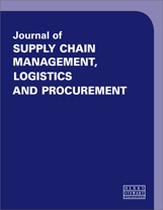Empty packaging flow and cost optimisation using digital enhancements
Abstract
‘Expansion means complexity and complexity decay’, said Cyril N. Parkinson. This quote is still very relevant in the current economic context and should challenge every organisation to continuously look for ways to improve its performance. Nowadays, however, supply chain teams are expected to play an increasingly strategic role in developing agility to rapidly meet changing requirements of customers, optimise costs and generate value for the company. In the automotive industry, the specific packaging of the vehicle parts represents an important asset: a huge volume of particular stillages and plastic boxes shared between different vehicles or powertrain plants, as well as outsourced parts suppliers. This requires strong management, because any packaging unavailability affecting one of the involved actors can lead to very negative effects such as production shutdowns, which translates to higher costs. This paper describes the way in which Dacia-Renault’s supply chain team has upgraded packaging management processes and implemented the latest technology and digital tools to optimise costs and bring end-to-end visibility to this specific activity.
The full article is available to subscribers to the journal.
Author's Biography
Daniel Enache manages supply chain activities related to new vehicle projects for Dacia brand within the Renault Group. Daniel has ten years’ experience as IT manager for Dacia-Renault-Nissan SEE Sales Division and ten years’ experience in the supply chain and automotive industry as Powertrain Plant Logistics Manager and Supply Chain Range Manager. He is very change-oriented, a good coach for his team members and has a keen business sense. Seeking the most innovative ways to improve products and services, optimising costs and processes, as well as adding value for internal and external customers remain his priorities. His responsibilities as a leader include strategic sourcing and logistics cost optimisation for new Dacia vehicle projects, mainly in Romania and Morocco, from the beginning of the design phase of the future vehicle, implementing strategies such as design to logistics, supply flow optimisation and packaging densification. Daniel has a Master’s degree in business administration from a group of four major schools in Paris, France (Collège des Ingènieurs, Sciences Po, Ècole des Mines, Ècole des Ponts et Chaussèes).
Citation
Enache, Daniel (2022, September 1). Empty packaging flow and cost optimisation using digital enhancements. In the Journal of Supply Chain Management, Logistics and Procurement, Volume 5, Issue 1. https://doi.org/10.69554/ZMDB9089.Publications LLP
